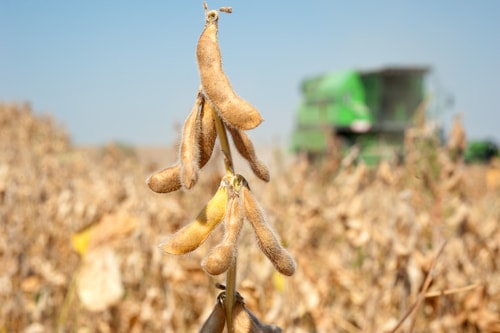Ending stocks projected at 445 million bushels
By Diego Flammini
Assistant Editor, North American Content
Farms.com
The latest USDA World Agricultural Supply and Demand Estimates (WASDE) report suggested soybean prices could be on the rise.
“We raised our price targets yesterday to $10 from $9.50 (per bushel),” said Moe Agostino, chief commodity strategist with Farms.com Risk Management. “One key is that demand remains record strong from China and around the globe, despite a record South American crop and plenty of supplies in the U.S.”
“$10 per bushel is not out of the question in the coming 30-60 days.”

According to the WASDE report, soybean exports were increased by 15 million bushels to reflect China’s need for the crop.
Agostino said Mother Nature may also play into the upswing in soybean prices.
“The markets also seem to be adding a weather risk premium as we embark on another growing season,” he said.
The WASDE report estimates 82.7 million acres of U.S. soybeans have been planted and 81.8 million acres have been harvested at average yield of 48 bushels/acre; meaning if soybeans hit $10/bushel, each soybean acre could be worth nearly $500.
Looking at corn, the USDA estimated the season-average farm price to be about $3.55 per bushel; and wheat could see anywhere from $4.90 to $5.00 per bushel.
The next WASDE report will be released May 10.